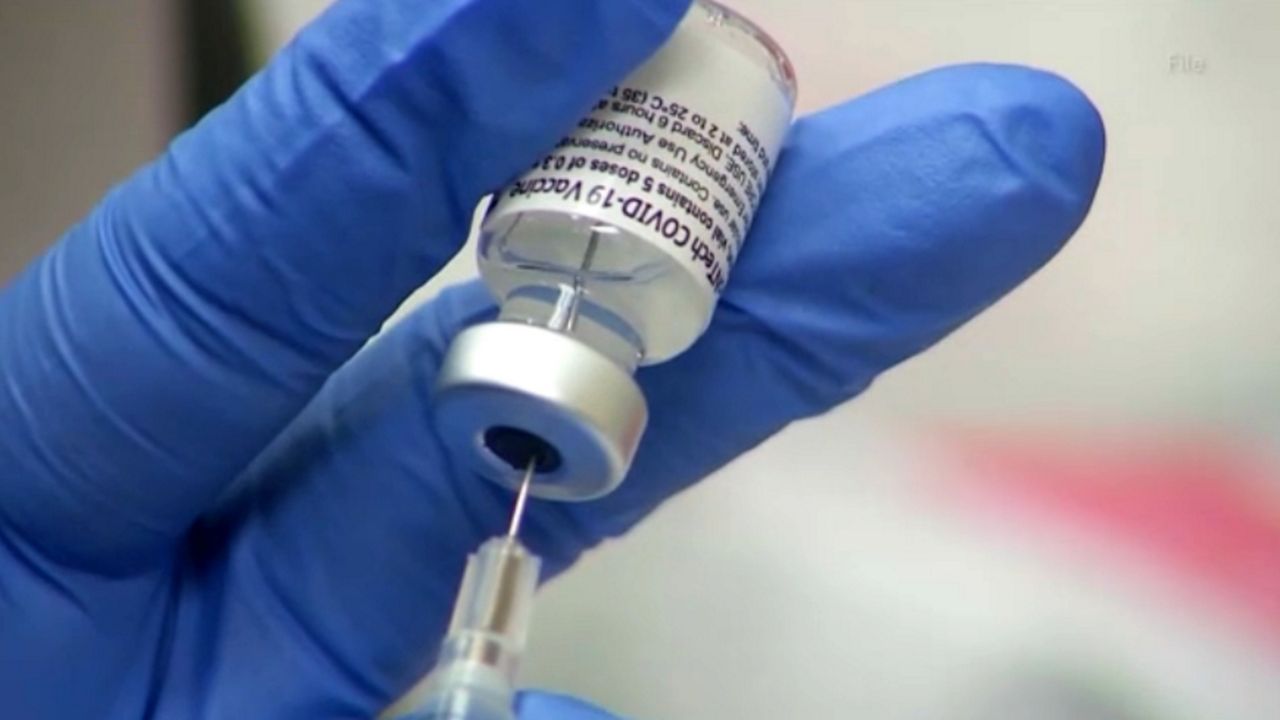TEXAS — Dr. Carolyn Salter has spent the last four months on a personal crusade to get COVID-19 vaccines into the arms of the residents of rural Anderson County.
It hasn’t been easy.
She’s held vaccination clinics at meatpacking plants, Veterans of Foreign Wars halls, community centers and school districts. In total, she has personally administered more than 2,000 vaccines.
Still, Salter, a physician who served two terms as mayor of Palestine, the county seat of Anderson County, said she continues to come up against a stubborn “groupthink” for persuading people to get the jab.
“It’s not just hesitancy,” she said. “It’s like belligerent refusal.”
Even in her Palestine clinic, five out of 15 of her staff still aren’t vaccinated, telling Salter that they were going to “wait and see.”
With just under 15% of the population 16 years and older fully vaccinated, Anderson County has the lowest COVID-19 vaccination rate in the state, according to the Texas Department of State Health Services’ statistics. The statewide average for fully vaccinated Texans 16 and older was 36.6% as of May 5.
In the 65 and older population, only 39% of Anderson County is fully vaccinated, compared with the statewide rate of 64% for the same age group.
Increasing vaccination rates in reluctant rural communities like Anderson County has become the latest roadblock in President Joe Biden’s efforts to get 70% of America vaccinated by July 4.
At the beginning of the U.S. vaccine rollout, rural communities in many parts of America were slightly ahead of their urban and suburban counterparts to get vaccinated as soon as doses were available, according to the KFF COVID-19 Vaccine Monitor.
Today, rural communities are lagging behind other areas, the monitoring project found. Four out of 10 rural residents reported having already been fully vaccinated, according to the survey.
One out of five rural residents in America said they will “definitely not” get vaccinated, the project found. In addition, only 11% of unvaccinated rural residents said they have tried to schedule a vaccination appointment, according to the KFF survey.
But understanding why so many in rural communities like Anderson County are refusing the vaccine has proven difficult.
“I wish I had all the answers, but it doesn’t make sense to me,” Salter said.
Politics plays a role in it, as it seems to do in everything in a very divided America these days, Salter said.
Overwhelmingly white, deeply religious and conservative, 78.6% of the county’s voters went for former President Donald Trump in the November election.
“I think when Trump didn’t come right out and support the vaccine and tell people to get vaccinated, they just decided not to do it en masse,” Salter said. “It’s a groupthink now.”
Anderson County’s reluctance to get vaccinated goes beyond politics, she said.
In talks with residents from Palestine and other cities in Anderson County and neighboring counties, Salter said many don’t trust the vaccine because it was released so quickly. Many tell her they want to wait until it is approved by the Food and Drug Administration, a process that could take years.
Others have told her they worry about the rare but dangerous form of blood clots found in at least six cases out of more than 6.8 million inoculations with the Johnson & Johnson vaccine. That vaccine was suspended for further review but reapproved for use last month by the Centers for Disease Control and Prevention.
A large number of people said they don’t want the vaccine’s possible side effects, such as a mild fever and chills that can last from several hours to a few days, Slater said.
Especially worrying for Salter is that it’s not just a hesitancy to get the vaccine in Anderson County. It’s the refusal to heed her and other medical officials’ advice to socially distance, to wear a face mask and to mitigate other risks of getting and spreading COVID-19.
Factors such as poverty, a lack of transportation, or limited broadband access have been roadblocks for many in rural Texas to get a vaccine appointment, Salter said. But there are still people out there who don’t believe COVID is real, she said.
“Refusing to wear a mask, that’s not freedom for me,” she said. “That’s just taking unnecessary risks. That’s like walking into a firefight without a flak jacket.”
Like many rural areas in the state, Anderson County, population 57,257, according to the latest U.S. census, waited for weeks as the state’s vaccine distribution targeted large metropolitan areas first.
Salter registered with the state as early as she could to get the vaccine, but her clinic’s distribution came well after the local hospital and pharmacies.
Giving the vaccine to primary care physicians such as herself early on could have had a big impact in rural communities like Anderson County, she said.
“We have a more personalized relationship with our patients, which the big corporate entities don’t,” she said. “We could have gotten them vaccinated very quickly if they had sent us the stuff earlier.”
She and her nursing staff have called each of her patients and told them to “come on in and get the shot.”
Most were willing to do so, some with more persuading than others. Salter said she got at least one man to agree to the vaccine by telling him being vaccinated was a “chick magnet.”



